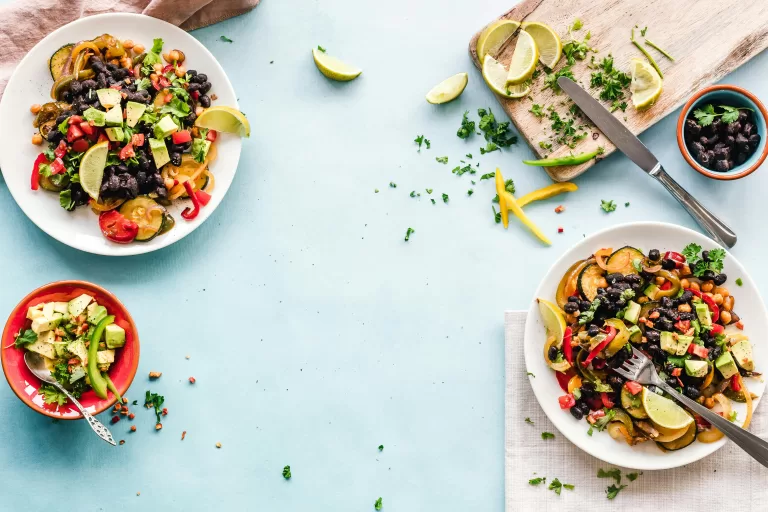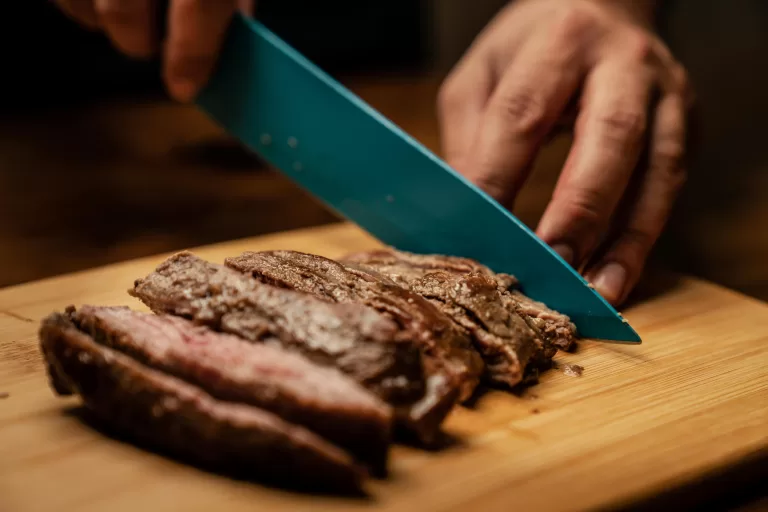The 16/8 Intermittent Fasting (IF) method has become a popular way to manage weight and improve overall health. While many people see great results with this approach, it’s important to listen to your body and determine if it’s the right fit for you. If you have any pre-existing medical conditions, it’s always a good idea to consult your doctor before starting an intermittent fasting regimen. In this post, we’ll explore some meal plans and eating window ideas, along with key considerations to help you get started with 16/8 IF in a way that works for you.
What Is 16/8 Intermittent Fasting?
The 16/8 intermittent fasting method is a time-restricted eating pattern where you fast for 16 hours, leaving an 8-hour eating window. For instance, if you eat your first meal at 12:00 p.m., you would stop eating by 8:00 p.m. The remaining 16 hours of the day are spent fasting, but you can still drink water, tea, or black coffee during this time.
Is 16/8 Intermittent Fasting Right for You?
While intermittent fasting offers numerous benefits, it’s not for everyone. Here are some things to consider:
- Listen to Your Body: Fasting for 16 hours may not suit everyone. If it makes you feel overly fatigued or irritable, reconsider your approach. It’s essential to pay attention to how your body responds.
- Consult Your Doctor: Those with conditions like diabetes, eating disorders, or thyroid issues should check with a healthcare provider before starting intermittent fasting.
- Adjust Based on Your Needs: Modify your fasting and eating windows to fit your lifestyle. Don’t hesitate to experiment and find what works best for you.
Flexible Eating Windows
Your eating window can vary based on your schedule and preferences. Create a healthy eating plate to ensure you’re getting a balanced and nutritious meal during your eating window. When following the 16/8 intermittent fasting method, the quality of your meals matters just as much as the timing. It’s important to avoid inflammatory foods to support digestion and overall wellness. Learn more about anti-inflammatory diets here. Try these eating window suggestions to align with your lifestyle:
Early Window (8:00 a.m. to 4:00 p.m.)
- Ideal for early risers who want to eat earlier in the day and avoid late-night eating.
- Works well if you have a busy evening routine or want to feel more energized in the evening.
Mid-Day Window (12:00 p.m. to 8:00 p.m.)
- A common eating window that works for most people, allowing a balanced lunch, dinner, and evening snack.
- Ideal for those who prefer to have breakfast in the form of a large, nutritious meal around noon.
Late Window (2:00 p.m. to 10:00 p.m.)
- Perfect for night owls who prefer eating later in the day.
- This window accommodates late work shifts or social dinners.
Meal Plan Ideas for 16/8 Intermittent Fasting
Here are three meal plan ideas that will keep you energized and satisfied during your eating window. More importantly, these meal plans prioritize whole, nutrient-dense foods while also avoiding restrictive or bland options. By incorporating a variety of flavors and balanced nutrients, you can make intermittent fasting both enjoyable and sustainable.
Meal Plan 1: Protein-Packed Power Meals
Eating Window: 12:00 p.m. – 8:00 p.m.
- 12:00 p.m. – Break the Fast:
- Grilled chicken or turkey avocado wrap with lettuce, tomatoes, and a whole wheat tortilla
- A side of mixed fruit salad (berries, oranges, and kiwi)
- 3:00 p.m. – Snack:
- Hummus and carrot sticks or cucumber slices with a drizzle of olive oil
- A handful of mixed nuts (almonds, walnuts, and pistachios)
- 6:30 p.m. – Dinner:
- Baked salmon with roasted sweet potatoes and steamed broccoli
- A side of quinoa or farro
- 7:30 p.m. – Snack:
- A small bowl of Greek yogurt with a spoonful of honey and chia seeds
For more on how to build a high-protein diet that supports your fitness goals, check out our full guide on high-protein diets.
Meal Plan 2: Balanced and Satisfying
Eating Window: 12:00 p.m. – 8:00 p.m.
- 12:00 p.m. – Break the Fast:
- Scrambled eggs with spinach, mushrooms, and a side of whole-grain toast with avocado
- A small smoothie made with almond milk, banana, and spinach
- 3:30 p.m. – Snack:
- Protein-packed smoothie with a scoop of whey protein, mixed berries, and almond butter
- A handful of almonds
- 6:30 p.m. – Dinner:
- Grilled chicken breast with roasted asparagus and mashed cauliflower
- A side of mixed greens with olive oil and balsamic vinegar
- 7:30 p.m. – Snack:
- An apple with a slice of cheddar cheese or a few whole-grain crackers
Meal Plan 3: Plant-Based Power
Eating Window: 2:00 p.m. – 10:00 p.m.
- 2:00 p.m. – Break the Fast:
- Buddha bowl with quinoa, roasted chickpeas, avocado, roasted vegetables (zucchini, sweet potato, bell peppers), and tahini dressing
- A side of mixed greens with olive oil and lemon juice
- 5:00 p.m. – Snack:
- A handful of trail mix with dried fruit, seeds, and dark chocolate chips
- A small smoothie with almond milk, spinach, banana, and flaxseeds
- 7:30 p.m. – Dinner:
- Lentil curry with cauliflower rice and a side of sautéed kale
- A piece of dark chocolate for dessert
- 9:30 p.m. – Light Snack:
- A bowl of mixed berries or a few slices of apple with almond butter
Interested in incorporating more plant-based meals? Explore our complete guide on plant-based diets to fuel your body with nutrient-rich, plant-based foods.
Tips for Success
- Stay Hydrated: Drink water, herbal teas, or black coffee throughout your fasting period to stay hydrated and curb hunger.
- Don’t Overeat: During your eating window, focus on nutrient-dense foods that nourish your body. Overeating can counteract the benefits of intermittent fasting.
- Be Patient: Your body will need time to adapt to intermittent fasting. Start slow and allow your body to adjust before making any drastic changes.
- Listen to Your Hunger Cues: If you’re feeling weak or overly hungry during fasting hours, it might be a sign to adjust your approach or try a different eating window.
Conclusion
16/8 intermittent fasting is a flexible and sustainable approach to improving health, losing weight, and feeling more energetic. Whether you’re just starting out or looking to tweak your eating habits, meal planning is essential to staying on track. Additionally, by listening to your body, adjusting your eating window, and choosing nutrient-dense meals, you can effectively make 16/8 intermittent fasting work for you. However, it’s important to always consult a healthcare professional if you have any underlying medical conditions, ensuring this method is safe for your specific needs.
Disclaimer: The information in this article is for informational purposes only and is not medical advice. Consult a healthcare professional before making any changes to your diet, exercise, or lifestyle, particularly if you have pre-existing conditions. The author and website are not responsible for any adverse effects from using this information.
References:
- Boyers, L. (2018). The Everything Guide to Intermittent Fasting: Features 5:2, 16/8, and Weekly 24-Hour Fast Plan. Adams Media. ISBn 978-1-5072-0842-7
Chambers, J. R. (2021). The 16:8 Intermittent Fasting and Lifestyle Plan. Pan Macmillan Australia Pty Limited. ISBN 9781760985158




